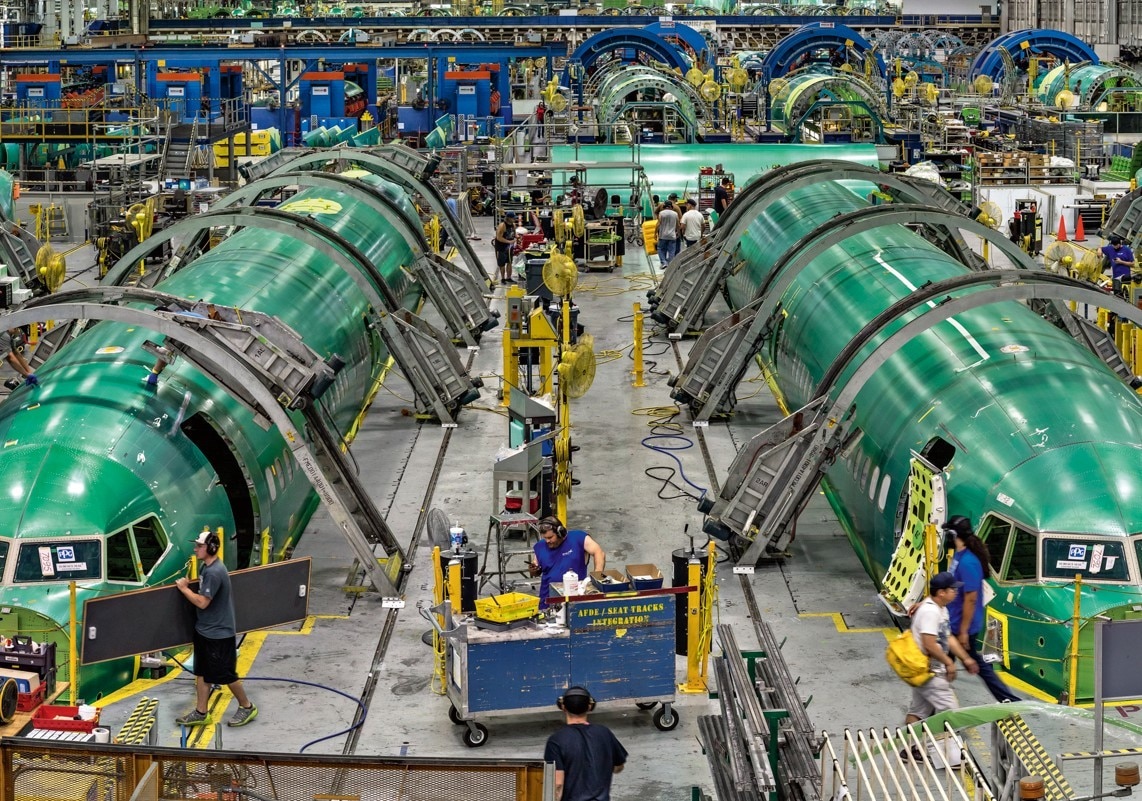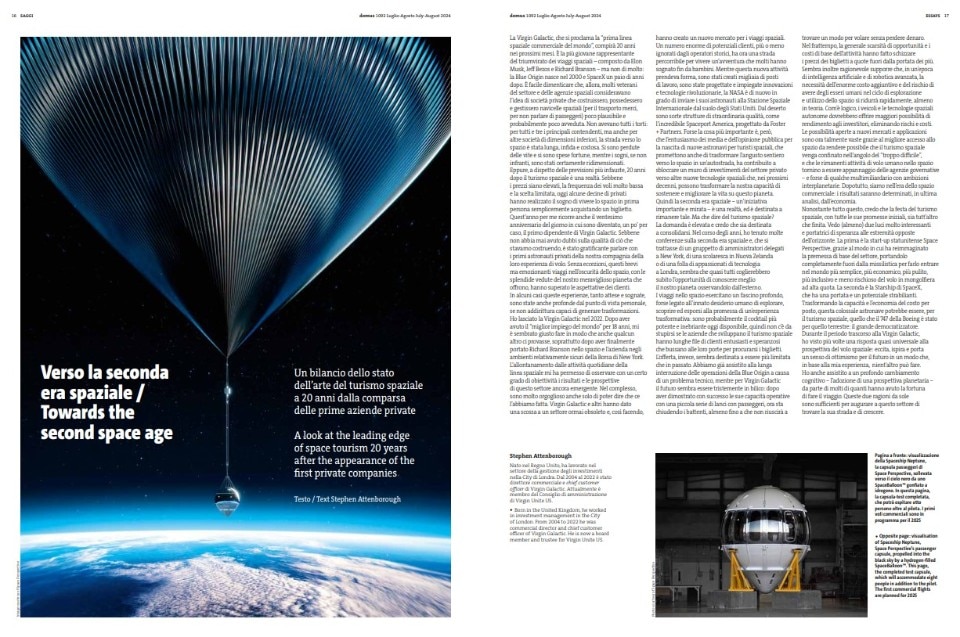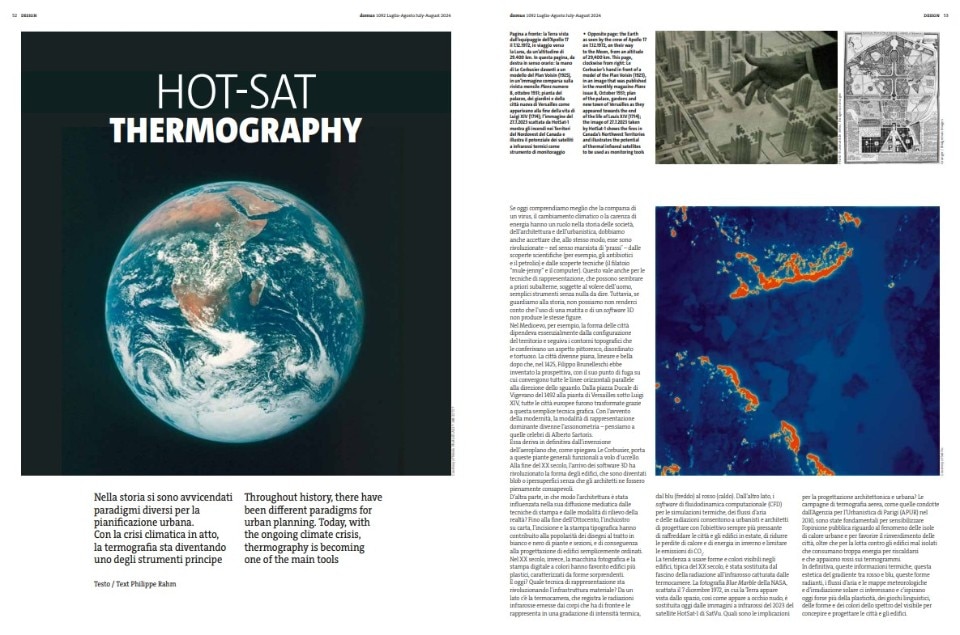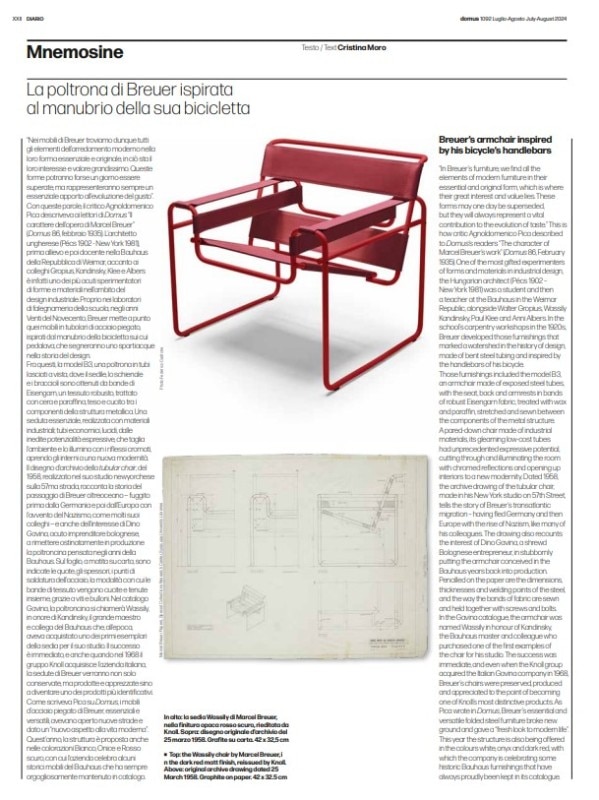“The first steps away from our planet that began in the 1950s are symbolic of the potential to build a new and better world from the ashes of one shattered by the military application of technology a decade earlier and a timely reminder of the lessons of history,” writes Norman Foster in the July-August issue. The debt that the British architect owes to the topics of this issue of Domus is deep: from the imagery represented by his buildings, such as the HBSC in Hong Kong (1986), to the more material aspects, such as in the Masdar community designs in Abu Dhabi (2014), which employed the same material used in space suits to counter the extreme temperatures of space.
The three essays by Architecture Critic, Author, and Journalist Jonathan Glancey; Senior Manager of Industrial Design at Space Exploration Technologies Anthony Sims; and Virgin Unite US Board Member and Trustee Stephen Attenborough expand on distinctive topics. Glancey examines the future of aviation, which has been scaled back by environmental concerns and redirected research towards more sustainable solutions. Sims provides a historical overview of aerospace design milestones, from the projectile in Jules Verne's “From the Earth to the Moon” (1865) to the achievements of the Apollo program a century later, touching on its influence on design, from the NASA’s logo to Stanley Kubrick’s works. On the other hand, Attenborough focuses on the present and the second space age, marked by the rise of private companies such as Virgin Galactic, Blue Origin, and SpaceX.
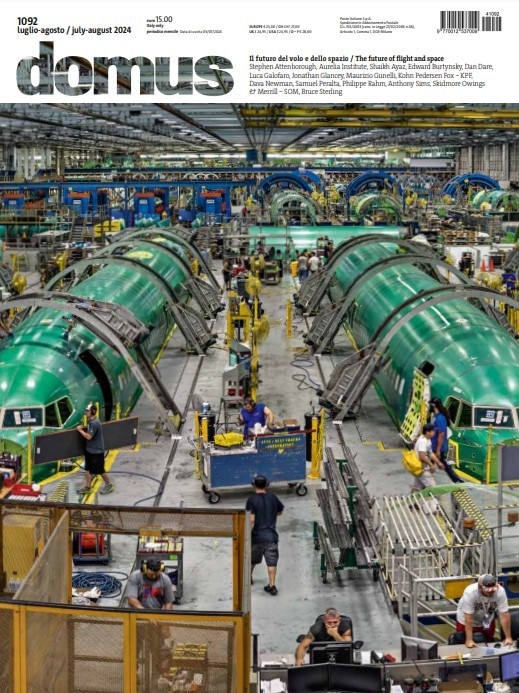
The Architecture section features two newly completed terminal projects. The first, designed by Skidmore, Owings & Merrill (SOM), is the Kempegowda International Airport Terminal 2 in Bengaluru, India. Shaikh Ayaz describes this terminal as integrating the built environment with nature and sustainability strategies. In contrast, Alessandro Benetti discusses Zayed International Airport Terminal A in Abu Dhabi, United Arab Emirates. Designed to optimize internal flows, the building is architecturally characterized by its interaction with the desert light, which influences the draping effect of the roof over the facade.
For the Design section, Maurizio Gunelli outlines recent innovations transforming aviation. Today, research is working on retrofitting old fuselages with revolutionary wings to reduce atmospheric gas emissions, an example is the X-66 project from NASA and Boeing; hi-tech airships for humanitarian emergencies, such as LTA Research's Pathfinder; eVTOLs (electric vertical take-off and landing aircraft) to free traffic-choked metropolises; and the revival of the quest for supersonic flight with NASA and Lockheed Martin’s X-59. Meanwhile, Philippe Rahm discusses historical paradigms that shaped the way we’ve been building − thermography as a contemporary cornerstone. SatVu's HotSat, he notes, is a groundbreaking tool that will produce unprecedented highly defined infrared images that will guide urban planning and architectural design. Luca Galofaro delves into Ariel Ekblaw and his Aurelia Institute, focusing on self-assembling Tesserae modules.
In the Art section, American science fiction writer Bruce Sterling explores Samuel Peralta's “Lunar Codex,” the first art gallery on the Moon, reflecting on the reason behind humanity’s desire to venture into space and find a way to live there over the past 50 years.
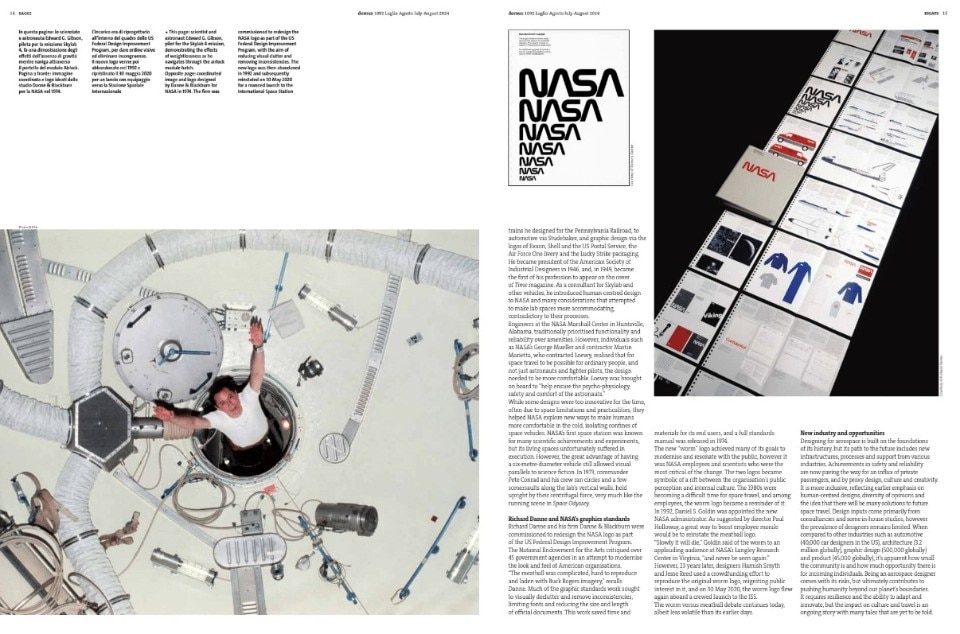
In the Archive section, Norman Foster examines the impact of "Eagle" and Dan Dare on design imagery in 1940s and 1950s Britain, and recounts how he collaborated with John Batchelor, one of the cartoonists, on the Renault Centre (1982) in Swindon.
For Foster on art, Norman Foster discusses Constantin Brâncuși's sculpture “L'Oiseau dans l'espace,” on which Brâncuși conducted experiments from 1923 to 1941. In Book reviews, Luca Galofaro reviews three books − by Fred Scharmen, Erika Nesvold, and Tim Peake − that explore the history, ethics, and politics beyond planet Earth. In Postscript, titled “The Architecture of the Sky,” Foster recounts his personal journey into aviation, his experiences as a pilot, and how these experiences have influenced some of the key elements of his architectural work.
In an interview conducted by Foster, Dava Newman, Director of the MIT Media Lab, emphasizes the importance of space exploration not only for technological innovation and discovery but also for its role in pushing human boundaries and fostering the sharing of knowledge.
The first steps away from our planet that began in the 1950s are symbolic of the potential to build a new and better world from the ashes of one shattered by the military application of technology a decade earlier.
Norman Foster
In the Cover story, Canadian photographer Edward Burtynsky provides an inside look at the Spirit AeroSystems facilities in Wichita, Kansas, where Boeing 737 fuselages are manufactured but then assembled at the Boeing plant in Renton, Washington.
In Diario, Paul Smith talks about the production cycles involving redwoods, while Francesco Franchi discusses the coordinated image of the Toledo Museum of Art, Ohio. Bosco Colto, a project of recovery and regeneration of the territory of Borgo Santo Pietro (Catania, Italy) is the subject of Paola Carimati's Human Design column, while in Talents, Silvana Annicchiarico talks about the work of Hwachan Lee and Yoomin Maeng, Kuo Duo, Korean designers who combine tradition and technology. In Emerging territories, Javier Arpa Fernández analyzes the spatial dynamics of Wasatch Front, a fast-growing urban area in Utah near Salt Lake City. In Mnemosine, Cristina Moro sketches the history of Wassily, the chair by Marcel Breuer, now reissued by Knoll. Elena Sommariva writes about We Design Beirut, an event held May 23rd-26th despite the turbulent geopolitical climate in Lebanon. Loredana Mascheroni investigates the innovative features of the Tacito sideboard by Alessandro Stabile for Magis. Finally, Giulia Ricci delves into Atomaa's research on minimal living, which culminated in a 21 m2 tiny house in Milan.

A new world of Italian style
The result of an international joint venture, Nexion combines the values of Made in Italy with those of Indian manufacturing. A partnership from which the Lithic collection of ceramic surfaces was born.

